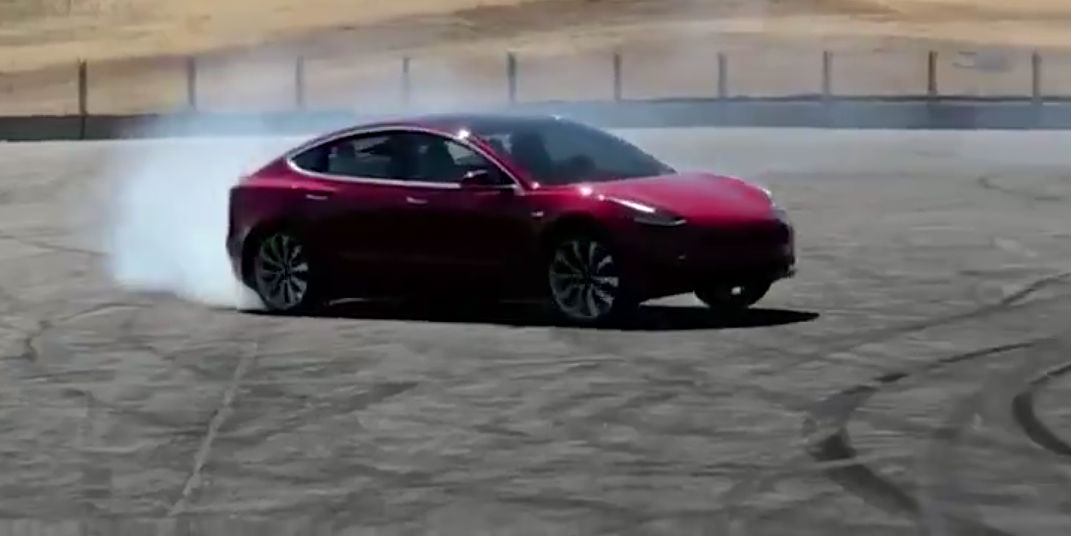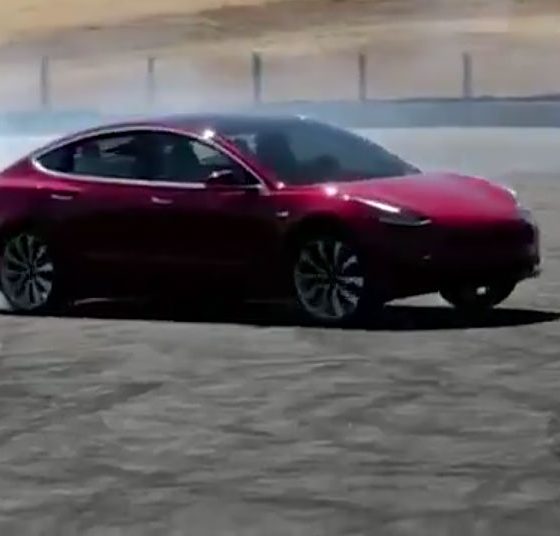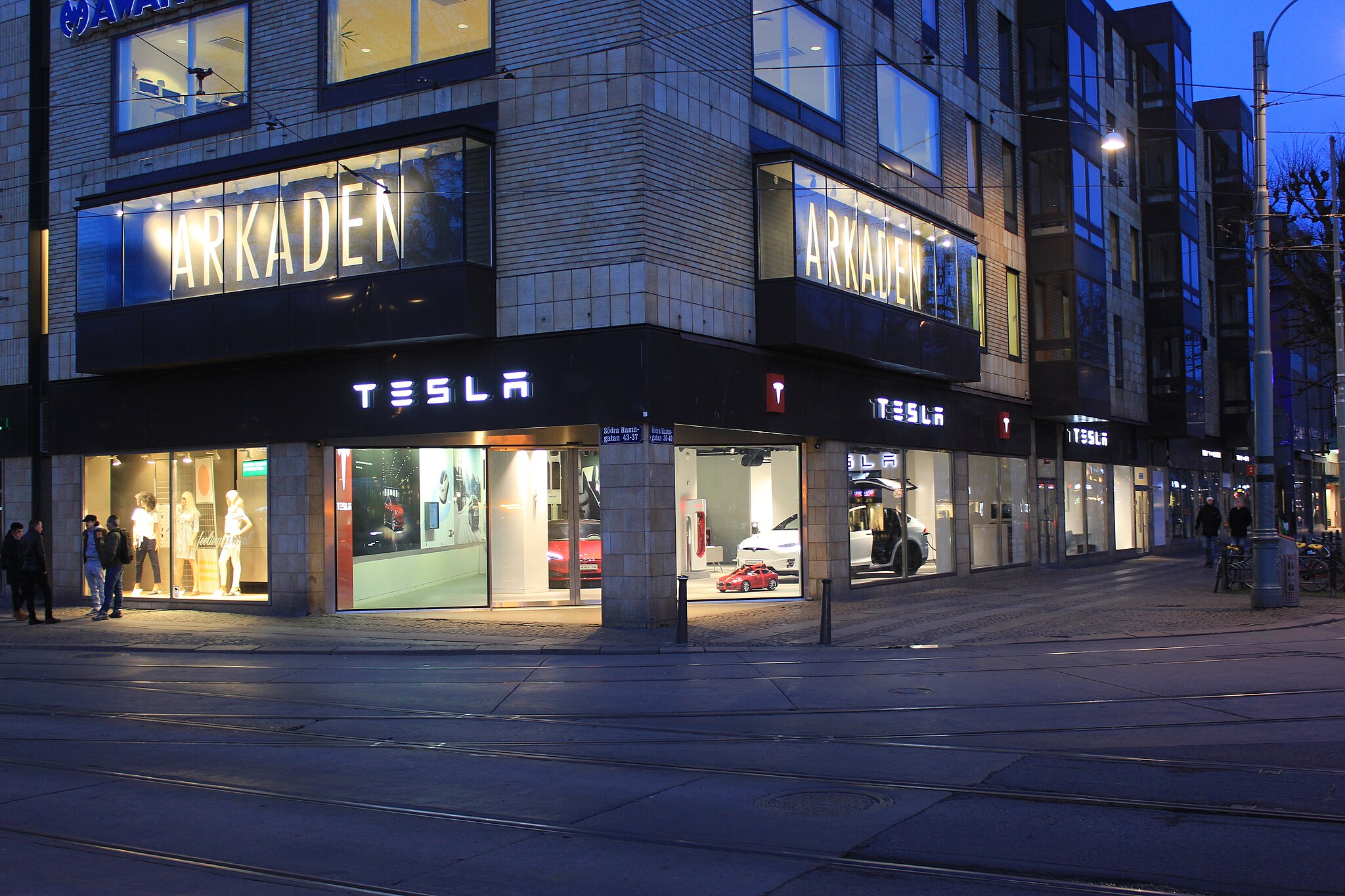

News
Tesla Model S P100D still king, but Elon Musk dubs Model 3 Performance as ‘higher value for money’
Tesla continues to actively promote the Model 3 to customers, with CEO Elon Musk recently stating that the Model 3 Performance is “higher value for money” compared to the company’s top-tier vehicle — the Model S P100D.
Musk’s latest push for the Model 3 Performance came as a response to a Model S P85D owner, who inquired if it is worth trading in his larger vehicle to the smaller but seemingly more nimble Model 3 Performance. For the first time since the Model 3’s launch, Musk compared the car favorably against the Model S P100D, at least when it comes to value for money.
Model S P100D is def still the top end, but Model 3 Performance is higher value for money
— Elon Musk (@elonmusk) August 5, 2018
In a lot of ways, Elon Musk’s statement does ring true. After all, the difference between a fully loaded Model S P100D and a fully-optioned Model 3 Performance is substantial. In Tesla’s design page, the Model S P100D is listed with an estimated cost of $135,200 with all options included. The Model 3 Performance, on the other hand, costs $80,000 fully-loaded. That’s a difference of roughly $55,000 — just slightly above the cost of a non-performance Tesla Model 3 Dual Motor AWD before any options.
This is not to say that Tesla is dissuading customers from purchasing the Model S P100D, of course. As mentioned by Musk in his tweet, the P100D is still the top end of Tesla’s offerings. With its gut-wrenching 0-60 mph time of 2.28 seconds with Ludicrous Mode, it is far quicker than the Model 3 Performance, which has a 0-60 mph time of 3.5 seconds. Nevertheless, the Model S P100D is known for severely throttling its performance when driven hard around the track — an issue that is not present in the Model 3 Performance, thanks to a clever battery and electric motor cooling system. The Model 3’s electric motors and battery use cooling circuits that are independent but linked. In the event that one component heats up, the system shifts cooling capacity where it’s needed. The system can also use the battery as a heat sink to shed excess thermal load from the motors.
Elon Musk’s latest tweet about the Model 3 Performance says a lot about the company’s strategy in the coming quarters. In the recently-held Q2 2018 earnings call, Musk and Tesla’s executives stood firm on their target of making the company profitable in the third quarter. Musk mentioned this in the call, when he linked the company’s profitability target to the Model 3 ramp.
“At a production rate of 7,000 cars a week, we believe we can be sustainably profitable from Q3 onwards. We’re going to try to raise that rate of the Model 3 production steadily in the coming quarters and try to get to the 10,000 cars a week number as soon as we can. I feel comfortable achieving a GAAP income positive and cash flow positive quarter every quarter from here on out,” Musk said.
So why the Model 3 Performance? Tesla likely makes a good amount of profit from the Model S P100D, but the full-sized sedan’s production has pretty much plateaued over the years. The Model 3 ramp, on the other hand, is still ongoing, and is expected to rise significantly in the coming quarters. Tesla is aiming to hit a gross margin of 25% for the Model 3, and with the vehicle’s production estimated to hit 10,000/week sometime next year, Tesla appears to have a solid shot at making its sustained profitability goals a reality.

Elon Musk
Delaware Supreme Court reinstates Elon Musk’s 2018 Tesla CEO pay package
The unanimous decision criticized the prior total rescission as “improper and inequitable,” arguing that it left Musk uncompensated for six years of transformative leadership at Tesla.

The Delaware Supreme Court has overturned a lower court ruling, reinstating Elon Musk’s 2018 compensation package originally valued at $56 billion but now worth approximately $139 billion due to Tesla’s soaring stock price.
The unanimous decision criticized the prior total rescission as “improper and inequitable,” arguing that it left Musk uncompensated for six years of transformative leadership at Tesla. Musk quickly celebrated the outcome on X, stating that he felt “vindicated.” He also shared his gratitude to TSLA shareholders.
Delaware Supreme Court makes a decision
In a 49-page ruling Friday, the Delaware Supreme Court reversed Chancellor Kathaleen McCormick’s 2024 decision that voided the 2018 package over alleged board conflicts and inadequate shareholder disclosures. The high court acknowledged varying views on liability but agreed rescission was excessive, stating it “leaves Musk uncompensated for his time and efforts over a period of six years.”
The 2018 plan granted Musk options on about 304 million shares upon hitting aggressive milestones, all of which were achieved ahead of time. Shareholders overwhelmingly approved it initially in 2018 and ratified it once again in 2024 after the Delaware lower court struck it down. The case against Musk’s 2018 pay package was filed by plaintiff Richard Tornetta, who held just nine shares when the compensation plan was approved.
A hard-fought victory
As noted in a Reuters report, Tesla’s win avoids a potential $26 billion earnings hit from replacing the award at current prices. Tesla, now Texas-incorporated, had hedged with interim plans, including a November 2025 shareholder-approved package potentially worth $878 billion tied to Robotaxi and Optimus goals and other extremely aggressive operational milestones.
The saga surrounding Elon Musk’s 2018 pay package ultimately damaged Delaware’s corporate appeal, prompting a number of high-profile firms, such as Dropbox, Roblox, Trade Desk, and Coinbase, to follow Tesla’s exodus out of the state. What added more fuel to the issue was the fact that Tornetta’s legal team, following the lower court’s 2024 decision, demanded a fee request of more than $5.1 billion worth of TSLA stock, which was equal to an hourly rate of over $200,000.
Delaware Supreme Court Elon Musk 2018 Pay Package by Simon Alvarez
News
Tesla Cybercab tests are going on overdrive with production-ready units
Tesla is ramping its real-world tests of the Cybercab, with multiple sightings of the vehicle being reported across social media this week.

Tesla is ramping its real-world tests of the Cybercab, with multiple sightings of the autonomous two-seater being reported across social media this week. Based on videos of the vehicle that have been shared online, it appears that Cybercab tests are underway across multiple states.
Recent Cybercab sightings
Reports of Cybercab tests have ramped this week, with a vehicle that looked like a production-ready prototype being spotted at Apple’s Visitor Center in California. The vehicle in this sighting was interesting as it was equipped with a steering wheel. The vehicle also featured some changes to the design of its brake lights.
The Cybercab was also filmed testing at the Fremont factory’s test track, which also seemed to involve a vehicle that looked production-ready. This also seemed to be the case for a Cybercab that was spotted in Austin, Texas, which happened to be undergoing real-world tests. Overall, these sightings suggest that Cybercab testing is fully underway, and the vehicle is really moving towards production.
Production design all but finalized?
Recently, a near-production-ready Cybercab was showcased at Tesla’s Santana Row showroom in San Jose. The vehicle was equipped with frameless windows, dual windshield wipers, powered butterfly door struts, an extended front splitter, an updated lightbar, new wheel covers, and a license plate bracket. Interior updates include redesigned dash/door panels, refined seats with center cupholders, updated carpet, and what appeared to be improved legroom.
There seems to be a pretty good chance that the Cybercab’s design has been all but finalized, at least considering Elon Musk’s comments at the 2025 Annual Shareholder Meeting. During the event, Musk confirmed that the vehicle will enter production around April 2026, and its production targets will be quite ambitious.
News
Tesla gets a win in Sweden as union withdraws potentially “illegal” blockade
As per recent reports, the Vision union’s planned anti-Tesla action might have been illegal.

Swedish union Vision has withdrawn its sympathy blockade against Tesla’s planned service center and showroom in Kalmar. As per recent reports, the Vision union’s planned anti-Tesla action might have been illegal.
Vision’s decision to pull the blockade
Vision announced the blockade in early December, stating that it was targeting the administrative handling of Tesla’s facility permits in Kalmar municipality. The sympathy measure was expected to start Monday, but was formally withdrawn via documents sent to the Mediation Institute and Kalmar Municipality last week.
As noted in a Daggers Arbete report, plans for the strike were ultimately pulled after employer group SKR highlighted potential illegality under the Public Employment Act. Vision stressed its continued backing for the Swedish labor model, though Deputy negotiation manager Oskar Pettersson explained that the Vision union and IF Metall made the decision to cancel the planned strike together.
“We will not continue to challenge the regulations,” Petterson said. “The objection was of a technical nature. We made the assessment together with IF Metall that we were not in a position to challenge the legal assessment of whether we could take this particular action against Tesla. Therefore, we chose to revoke the notice itself.”
The SKR’s warning
Petterson also stated that SKR’s technical objection to the Vision union’s planned anti-Tesla strike framed the protest as an unauthorized act. “It was a legal assessment of the situation. Both for us and for IF Metall, it is important to be clear that we stand for the Swedish model. But we should not continue to challenge the regulations and risk getting judgments that lead nowhere in the application of the regulations,” he said.
Vision ultimately canceled its planned blockade against Tesla on December 9. With Vision’s withdrawal, few obstacles remain for Tesla’s long-planned Kalmar site. A foreign electrical firm completed work this fall, and Tesla’s Careers page currently lists a full-time service manager position based there, signaling an imminent opening.








